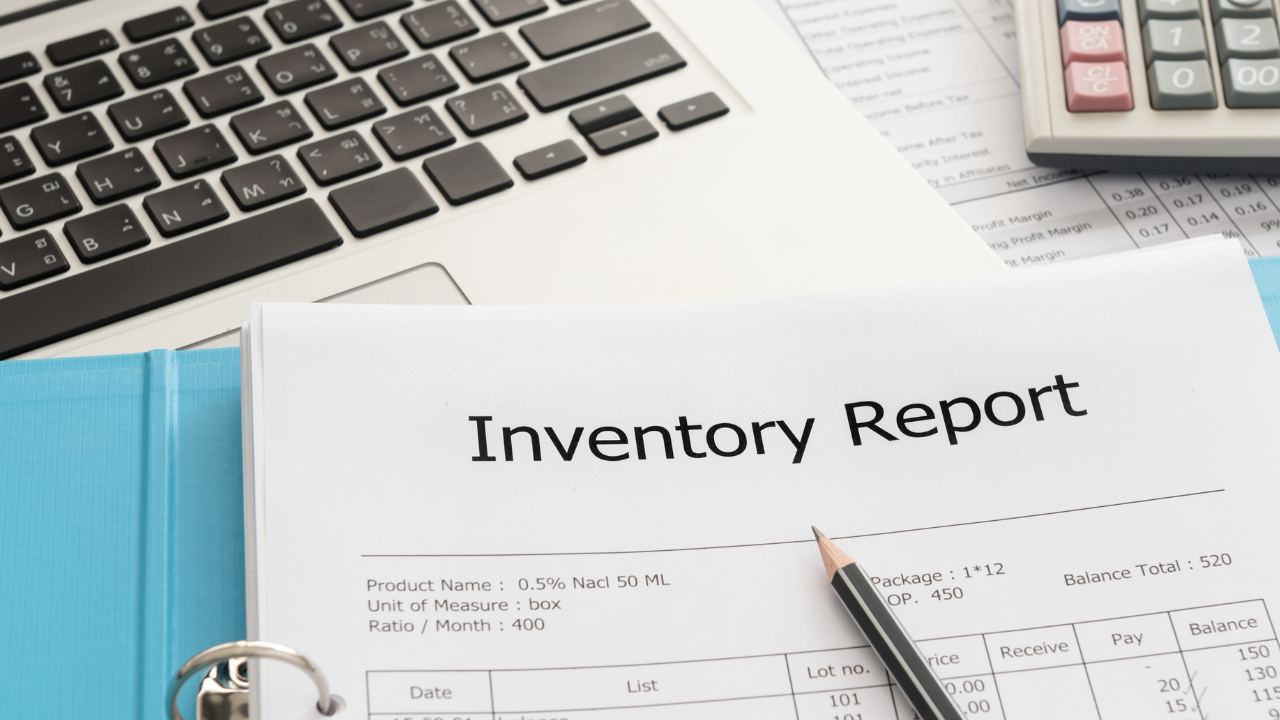Managing inventory is an essential part of business for distribution centers, manufacturing plants and retail outlets. Some challenges include cash flow management, storage, handling costs, and demand forecasting. Inventory shrinkage happens when products are lost between the manufacturer or supplier and the seller. Theft and damage are two of the reasons behind it.
What Exactly is Inventory Shrinkage?
Inventory shrinkage is the difference between what’s recorded in the inventory and what’s there. Other contributing factors include administrative errors like incorrect data entry, perishable goods that get spoiled and suppliers who invoice for more products than they deliver.

Causes of Inventory Shrinkage
Employees stealing is one of the significant causes behind inventory shrinking. They take products to use personally or manipulate inventory records. Shoplifting and robbery are other ways inventory gets stolen. There’s both internal and external theft to deal with.
Employee Theft
Employee theft is a big problem. It covers various activities, from misappropriating funds to stealing products off a shelf. There are also intangible assets that can get stolen, like intellectual property, trade secrets and confidential information.
External Theft (Burglaries or Shoplifting)
Shoplifters, burglars and other external parties often lead to inventory shrinkage through theft. Shoplifters use a variety of tools, like devices that deactivate security tags. Burglars can cause significant damage during break-ins.
Proactive measures include:
- Advanced security systems like CCTV cameras.
- Locked cabinets and secured display cases.
- Vigilant employees who maintain a presence on the sales floor.
The National Retail Federation’s National Retail Security Survey 2023 reports a bump in the shrink rate ( from 1.4% in 2021 to 1.6% in 2022). That spells USD 112.1 billion in losses for retailers.
Vendor Fraud
Vendors can contribute to inventory shrinkage through unethical practices like billing for undelivered goods and overcharging. Small businesses should conduct regular audits and thoroughly vet all of their suppliers.

Supplier Fraud
Substandard and counterfeit products can contribute to this problem. Supplier agreements that outline recourses for non-compliance and quality expectations are necessary. Regularly auditing your suppliers also helps.
Administrative Errors
A mistake made in record keeping and stock management can be two culprits. For example, a warehouse employee who records higher quality items than are received can inflate recorded inventory. That leads to perceived inventory shrinkage since the recorded items were never in stock.
Accounting Errors
Inaccurate accounting can affect inventory levels. Under recording inventory purchases can show lower inventory levels than existing ones. That can result in what looks like significant inventory shrinkage.

How to Calculate Inventory Shrinkage
Calculating inventory shrinkage is as easy as using a simple formula.
(Recorded Inventory Value?Actual Inventory Value)/Recorded Inventory Value×100% Here’s an example of how that works. An inventory was recorded and had a value of $50,000. The inventory after a physical count was $48,000. The calculation works this way. (50,000?48,000)/50,000×100%=4%
The rate of inventory shrinkage is 4%. The result is reported as an inventory shrinkage percentage.
Recording Actual Inventory
Accurately recording inventory is essential to calculate the precise amount of inventory shrinkage. One way to ensure your accounts are accurate is to conduct random regular spot checks on top of scheduled complete inventory counts. .
How to Record Inventory Shrinkage
Recording inventory shrinkage means detailing it in a shrinkage expense account. That gets highlighted in your income statement as an expense, reducing net income. It’s an essential part of your accounting records.
Strategies to Prevent Inventory Shrinkage
Several strategies can reduce inventory shrinkage.
Improve Security Measures to Prevent Inventory Shrinkage
Digital and physical security tools lessen the amount of theft. Digitally, implementing end-to-end encryption protects customer data and prevents fraud. Physically, radio frequency identification tags allow for real-time inventory tracking.
Conduct Regular Audits
Periodic inventory checks help to identify discrepancies quickly. These are excellent ways to reveal damage patterns, theft and administrative errors.

Employee Training
Staff should be educated on recognizing suspicious behaviors and using security systems. Examples include individuals who avoid eye contact with staff and spend too much time checking out your store’s layout and security measures.
Implement Robust Inventory Management Systems
Advanced inventory management systems streamline inventory control. Cutting-edge technologies like RFID tags and IoT integration provide real-time tracking.
Predictive Analytics and AI can predict future demands from historical sales data and market trends. Centralized inventory data can be accessible right across the supply chain. That allows for better decision-making andcoordination.

Vendor Management
Today’s business relies on a complex network of suppliers, service providers and contractors. That’s why they should all be vetted and managed correctly.
- Regular audits ensure that vendors are staying compliant with your contractual obligations.
- Monitor a vendor’s performance against service standards, delivery, and quality benchmarks. Ensure these benchmarks are specific to your industry; for example, bar inventory can have different standards than retail inventory.
- Comprehensive background checks are necessary, including verifying business licenses, references and litigation history.
Use of Technology for Inventory Tracking
Inventory tracking technology plays a crucial role in managing stock levels, optimizing storage, and enhancing order fulfillment processes. These technologies offer diverse solutions to suit various business needs, from simple manual systems to highly automated and sophisticated ones optimized for global supply chain management. Here’s a brief overview and a bulleted list of the primary types of inventory tracking technology:
- Barcode Scanners: Utilize a barcode generator and optical scanners to read barcodes on products, quickly inputting data into inventory management systems.
- RFID Tags: Radio Frequency Identification uses electromagnetic fields to automatically identify and track tags attached to items, offering more detailed tracking without direct line-of-sight scanning.
- IoT Sensors: Internet of Things sensors provide real-time data on stock levels, conditions, and locations, enabling proactive inventory management.
- Inventory Management Software: Offers a centralized platform to track inventory levels, orders, sales, and deliveries, often integrating with other business systems for streamlined operations. Specific types are available for certain industries or uses, such as warehouse inventory management software and retail inventory management software, or even those aimed at specific platforms like eBay inventory management.
- Drones: Used in large warehouses to automate inventory checks, reducing the need for manual stock-taking and increasing accuracy.
- Robotics: Automated robots can move inventory within a warehouse, working alongside human workers to optimize the picking and packing process.
- Cloud-based Systems: Allow for real-time inventory tracking and access from any location, facilitating remote management and data analysis.
These technologies can be used independently or in combination, depending on the scale and specific needs of a business, to enhance accuracy, efficiency, and decision-making in inventory management.
| Technology | Key Features | Advantages | Drawbacks |
|---|---|---|---|
| Barcode Scanners | – Optical scanning – Reads printed barcodes |
– Cost-effective – Easy to implement |
– Requires line-of-sight – Manual scanning |
| RFID Tags | – Wireless tracking – No line-of-sight needed |
– Automates tracking – High data capacity |
– Higher cost than barcodes – Reader collision issues |
| IoT Sensors | – Real-time data – Connected devices |
– Detailed monitoring – Proactive management |
– Requires internet – Complex setup |
| Inventory Management Software | – Centralized database – Integrates with other systems |
– Streamlines operations – Scalable |
– Can be expensive – Requires training |
| Drones | – Aerial inventory checks – Automated operation |
– Efficient in large spaces – Reduces manual labor |
– Regulatory restrictions – Initial high investment |
| Robotics | – Automated movement – Works alongside humans |
– Increases efficiency – Reduces human error |
– High initial cost – Maintenance needs |
| Cloud-based Systems | – Online access – Real-time updates |
– Accessible anywhere – Easy to scale |
– Dependent on internet – Security concerns |

What to do if Inventory Shrinkage Occurs
Here are the steps to take when there’s a considerable inventory shrinkage:
- Investigating the causes should begin with a complete audit of the inventory. Small business inventory management software and order management software can help you analyze the data for discrepancies.
- Categorizing the losses into vendor fraud, administrative errors, and shoplifting can help. You should consider evaluating your security measures.
- Revising your strategies can mean streamlining the whole process, including regular audits and standardized procedures for shipping and receiving.
Small businesses should consider integrated POS systems, automated reordering systems, and RFID to reduce inventory loss.
Managing Inventory Shrinkage Effectively
Combating Inventory shrinkage is about understanding the root causes, being accurate when you record the losses and implementing proactive strategies. Regular Audits and cycle counts can help you verify the accuracy of your records. Leveraging technology to better your tracking and surveillance capabilities is another positive move. For example, if you’re looking for warehouse inventory management or retail inventory management help, you may look up with best inventory app for those specific purposes.
FAQ
What is inventory shrinkage?
Inventory shrinkage refers to the loss of inventory that occurs between the time it is recorded as available for sale and the time it is physically counted. This loss can result from various factors such as theft, damage, administrative errors, or inefficiencies in the supply chain.
How is inventory shrinkage calculated?
Inventory shrinkage is typically calculated by comparing the recorded inventory levels (as per the accounting records) with the actual physical inventory count. The formula for calculating inventory shrinkage is: Shrinkage = (Recorded Inventory – Actual Inventory) / Recorded Inventory * 100%.
What are the main causes of inventory shrinkage?
The main causes of inventory shrinkage include theft (both internal and external), administrative errors, supplier fraud, employee errors, damage in transit or storage, improper handling, and inaccurate record-keeping.
How does inventory shrinkage impact businesses?
Inventory shrinkage can have significant financial implications for businesses. It directly affects profitability by reducing revenue and increasing costs. Additionally, it can lead to distorted financial reporting, erode customer trust, damage reputation, and ultimately hinder business growth.
How can businesses prevent inventory shrinkage?
Businesses can employ various strategies to prevent inventory shrinkage, including implementing strict inventory control measures, conducting regular audits and cycle counts, investing in security systems, training employees on proper handling and reporting procedures, improving supply chain visibility, and utilizing advanced inventory management technologies.
What are the consequences of not addressing inventory shrinkage?
Failing to address inventory shrinkage can lead to a range of negative consequences for businesses, including decreased profitability, loss of competitive advantage, strained relationships with suppliers and customers, increased operational costs, and potential legal implications in cases of fraud or theft.
How can businesses detect and investigate inventory shrinkage?
Businesses can detect inventory shrinkage through regular inventory counts, variance analysis, and performance metrics monitoring. Upon detection, they can conduct thorough investigations to identify the root causes, which may involve reviewing transaction records, surveillance footage, and interviewing employees or stakeholders involved in the inventory management process.
Image: Envato Elements
This article, “What is Inventory Shrinkage?” was first published on Small Business Trends
